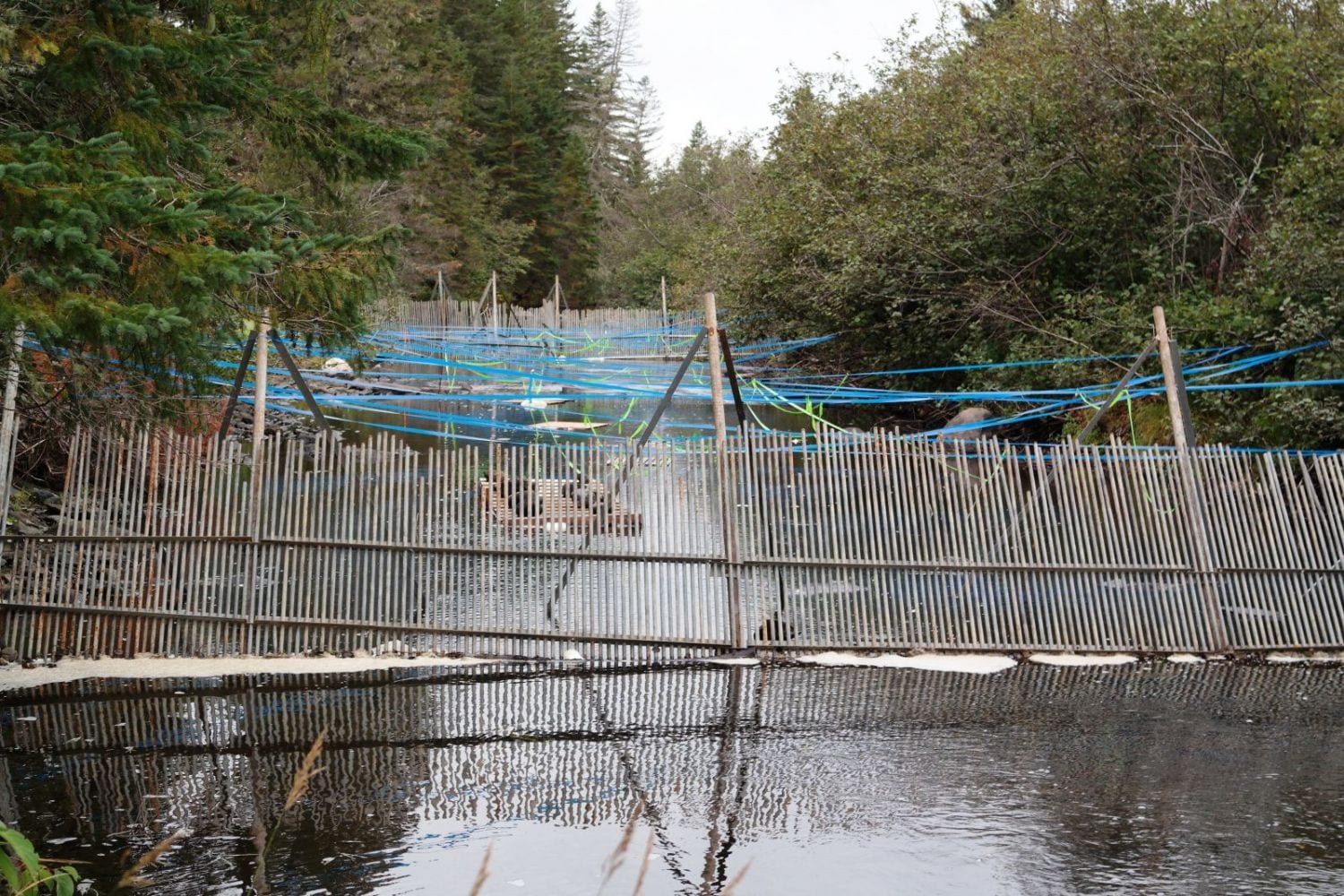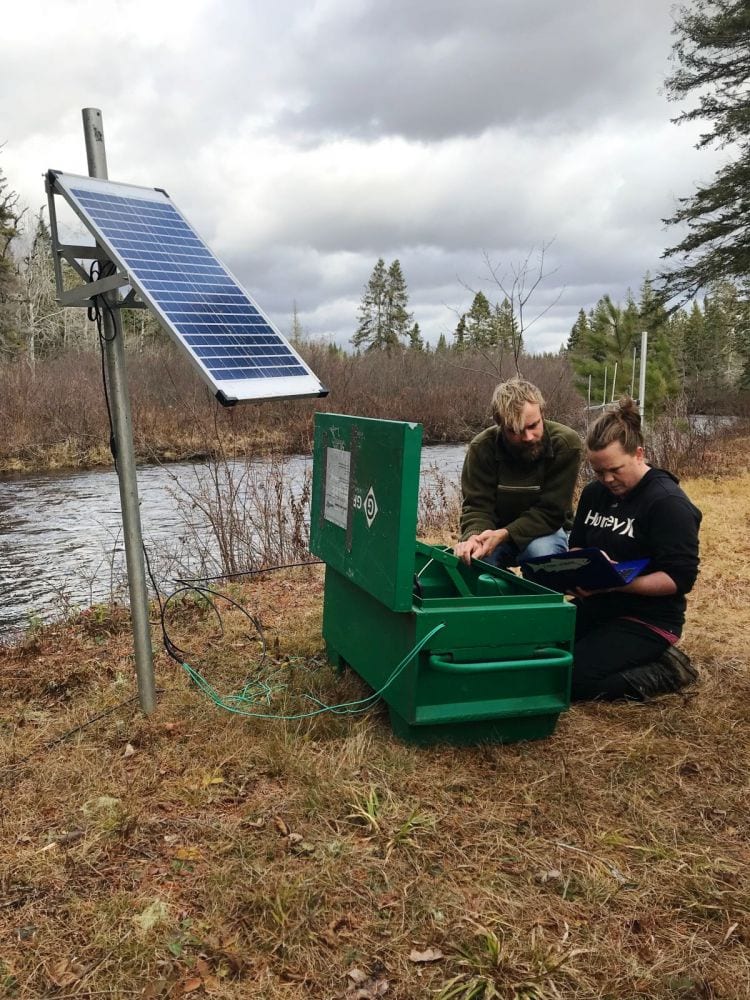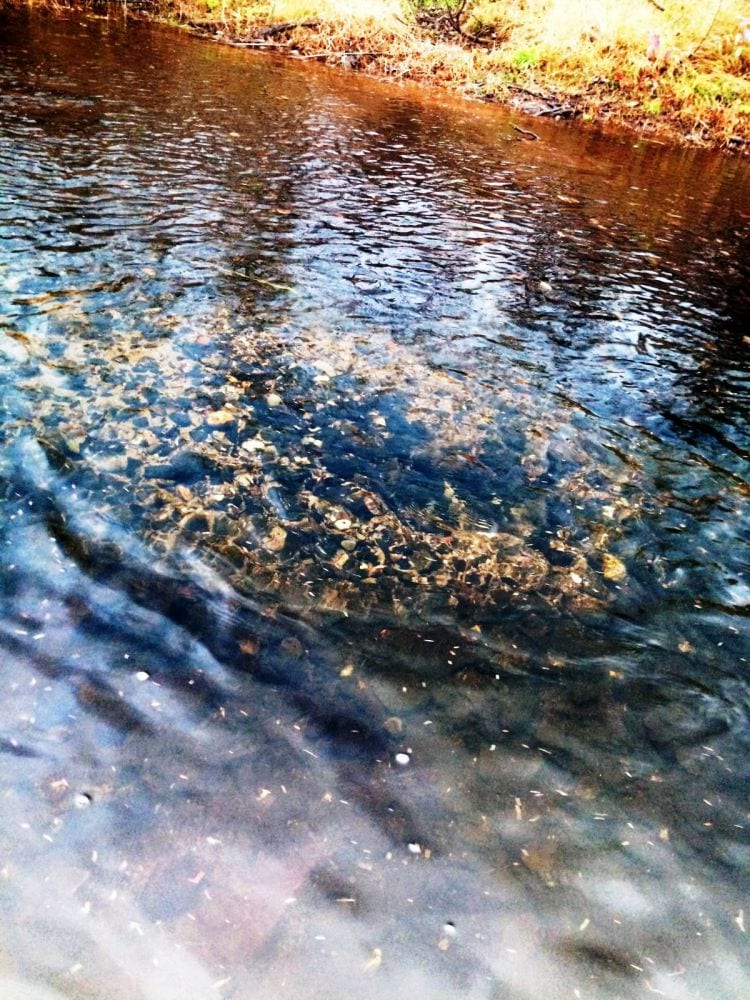The CAST SAS Program and the Experimental River
CAST Background Information
Many people interested in Miramichi Atlantic salmon have heard of “CAST” or Collaboration for Atlantic Salmon Tomorrow, but most people are probably still not aware of exactly what CAST is doing to help Miramichi salmon not only survive, but hopefully to once again thrive. As background the CAST program was conceived by bringing together a diverse group of representatives from government, higher education, industry, conservation organizations, and private business. These partners include the University of New Brunswick, The Miramichi Salmon Association, The Canadian Rivers Institute, J. D. Irving, and Cooke Aquaculture. In my view this is a smart concept, because in addition to the diverse and unique resources these established organizations bring to the table, by going forward together the collaboration eliminates in advance many of the conflicts that normally occur any time one organization tries to do something on its own.
While the CAST partners have already made several important advances – like the installation of special ARIS sonar devices on both the SW and NW Miramichi rivers to count returning adult salmon – the Smolt-to-Adult Supplementation (SAS) conservation strategy portion of the CAST program is their proactive initiative to supplement the number of adult salmon spawning in the system. I especially like the fact that it is proactive rather than a plan to act only after the population totally collapses.
Many of us who are not fishery biologists get frustrated simply hearing only that more study is needed. Certainly there is more that must be learned about Atlantic salmon and the environment in which they live, and that process can never stop. But many of us are concerned about losing the fisheries that we have now before we get beyond the study phase. That concern is well founded when you realize that we have already lost every river in the Gulf of Maine and the Bay of Fundy as places to fish for Atlantic salmon. During 2018 even the exhaustively monitored and studied Magaguadavic River in New Brunswick joined the list of salmon rivers that are functionally extinct.
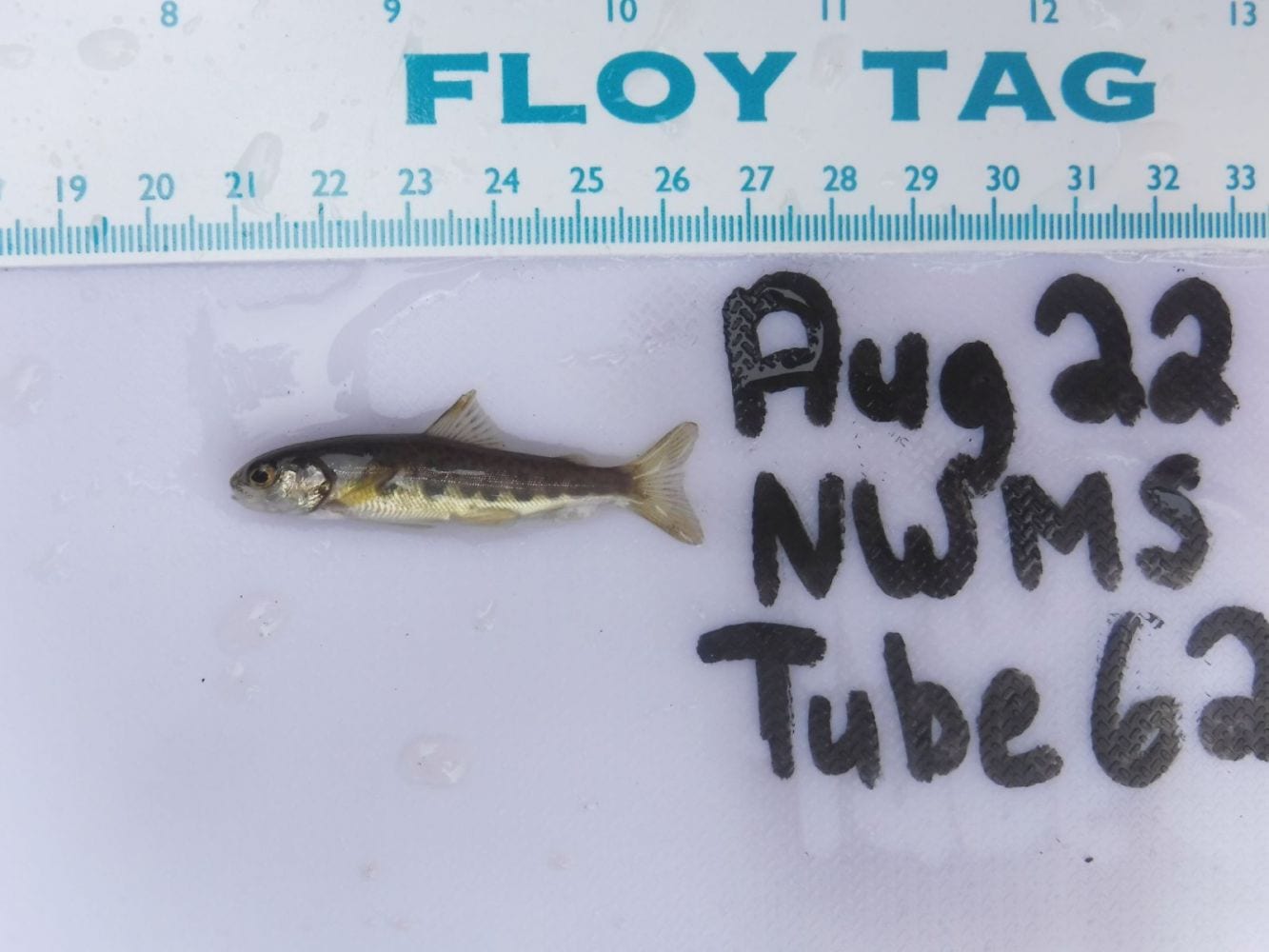
Atlantic salmon fry captured in the Experimental River in August 2018. DNA analysis to determine the exact parentage is currently underway.
CAST has a plan, and intends to implement a concrete solution that within a short while could have a significant positive impact on the Atlantic salmon population of the Miramichi system. This is applied science, and with the Miramichi salmon run in recent years consistently failing to meet minimum spawning conservation requirements there is definitely an immediate need for it.
The CAST “SAS” Plan
The SAS strategy is to first capture outward migrating wild Atlantic salmon smolts in the Miramichi catchment and rear them to adulthood in the Miramichi Salmon Association hatchery in South Esk, New Brunswick. Just prior to the fall spawning season, during the year when these SAS adults reach maturity, they are released into the wild in the river from which they were captured as smolts. They are expected to then spawn naturally and increase the number of eggs deposited in the river. The plan was conceived by the collective wisdom of the scientists working for the various CAST partners, and among its advantages over traditional juvenile stocking methods is natural partner selection and the fact that the resultant fry will have been born wild in the streambed.
The current salmon returns problem is not with the Miramichi’s spawning capacity or the condition of the river. The river is blessed with the greatest abundance of spawning gravel of any river in North America, and it is relatively pristine. Even with the lower adult returns of recent years the Miramichi is still sending a substantial number of smolts to the ocean each spring – the few needed for use in the CAST project are quite literally a tiny fraction of a drop in the bucket. Based on historic percentages of smolt survival in the ocean there would be no lack of adult fish returning to the Miramichi. The percentage, though, of smolts that live to make it back today is much smaller than even 10 years ago. We don’t know why. It is important that we do research, find out what is happening to young salmon on the high seas, and then do something about it. But it is also imperative that we keep sending a high number of smolts to the ocean so that if and when we do fix the problem our run is not already extinct, and also, so that in those occasional good years that still do come along – like 2010 and 2011 – that the Miramichi is still sending enough smolts to sea so that we take maximum advantage of those opportunities. Utilizing the SAS program to supplement what in most recent years has been an insufficient and declining return from the sea appears to be our best hope of doing that.
In addition to the high seas mortality and changing environmental conditions that all salmon rivers face, the Miramichi has experienced a great recovery in its native striped bass population. When the striper population collapsed in the 1980s it was estimated that a good rebuilding target would be about 35,000 adult bass. We now have 1,000,000 more or less, and they are undoubtedly eating anadromous herring – gaspereau – shad, sea run brook trout, smelts and Atlantic salmon smolts. While it may not be fair or accurate to exclusively blame striped bass, all of these important fish populations have declined precipitously, seemingly in concert with the striped bass expansion. The First Nations people have been granted a small commercial quota for striped bass, and that fishery began during the late fall of 2018 on a somewhat limited basis. The recreational fishery for striped bass has been highly constrained by a restrictive slot limit that could be at least somewhat liberalized. The striped bass population may also prove to be cyclical – as it is on the East Coast of America – and it could decline somewhat naturally. Right now, though, the percentage of Miramichi smolts making it out of the river to the ocean is substantially less than other New Brunswick salmon rivers – like the Restigouche – that had similar smolt escapement statistics to the Miramichi before the striped bass population grew to its current level. The SAS program is hoped to be a temporary measure to bolster the number of spawning adults during these troubled times, and many people in the Atlantic salmon community feel that it is probably the best conceived plan that exists, and that we need it right now.
The Current Situation with SAS
Beginning in 2015 the CAST team was given a permit by the Department of Fisheries and Oceans “DFO” to collect wild smolts, and a permit for smolt collection has been granted each year since. It was understood that the first adults would be available in 2017. When it came time to release the adults the DFO was not willing to let that part of the program go forward as originally planned. The reason given was that a final peer review had not yet been completed. That review was completed early in the winter of 2018, and with a few manageable caveats it reflected positively on the SAS concept. When the fall of 2018 rolled around, and the several hundred adult salmon were nearing a readiness to spawn, permission to put them in the river was again denied. No clear reason was ever given, except that proper consultations had not occurred with First Nations. Before next year rolls around, though, some very capable people are trying to work with First Nations, and everyone is now operating under the hope and expectation that in the fall of 2019 DFO will grant the needed permits.
CAST was allowed to introduce a limited number of adults into a so-called Experimental River “ER” in both 2017 and 2018. The section designated for this work is called the NW Millstream. This stretch of river was chosen as the ER because while it at one time was used extensively by Atlantic salmon for spawning and juvenile rearing, but for years the river had been blocked by an industrial dam. The dam was later removed but the wild population there has never fully recovered. Also, the Mill Stream is very close to the estuary, and rather remote from the more important spawning and nursery grounds located further upriver.
Prior to the release of the SAS stock a barrier fence with an integrated trap was installed to catch wild Atlantic salmon migrating into the experimental section. All fish destined for the ER are first released into a sealed-off site (60m) within the ER. This site is used as a conditioning area for the fish after transportation and tagging. Instream structures are installed to provide cover and hiding spots. The fish remain in the “conditioning” area for at least 4 days prior to their final release into the larger ER area.
The goal of the ER project is to learn how successfully the SAS adults are able to reproduce in the wild both with themselves and with wild fish that they may encounter. The project is also expected to show how well the resulting fry fare in the river compared to totally wild fry. The SAS techniques have already been used successfully in other rivers in the United States and Canada. The Upper Salmon River in Fundy National Park, and the Saint Mary’s River in Nova Scotia have both recently undertaken versions of the SAS program. Importantly, DFO has operated a SAS program in the Tobique River in the headwaters of the Saint John since 2003 that is similar in scale to that proposed in the Miramichi. Stocking there often exceeds 1000 released SAS adults.
Because the ER provides a somewhat observable environment with controls over the fish that are allowed in and out a lot can be learned that would not be possible in the expansive, overall Miramichi River system. Every enhancement situation is somewhat unique. The Miramichi salmon population is not at the point of extinction, and this provides the Miramichi CAST SAS program with the great benefit of being able to gather completely wild, native smolt stock specific to the river. Information from the ER will allow the CAST scientists to fill gaps in scientific knowledge about spawning behavior, post spawning behavior, and the survival of the eggs, fry and parr at various life stages for both SAS adults mating together and SAS adults mating with wild salmon. In fact a lot has already been learned.
Conclusive answers to these questions are in the making, but it is already a proven fact that the purely wild and SAS adults mated in the hatchery produced viable fry that are indistinguishable from those produced by mating totally wild adults.
SAS Progress on the Experimental River “ER”
2017 20 male and 20 female adult SAS Atlantic Salmon were released into the ER in the fall of 2017. The permit granted in 2017 only allowed the collection of wild fish within the NW Millstream. Due to the late approval of the project, and the extreme low water conditions during the autumn of 2017, no wild adult salmon were collected or migrated into the ER section naturally. Hence the important reference group of wild fish was not part of the experiment in 2017.
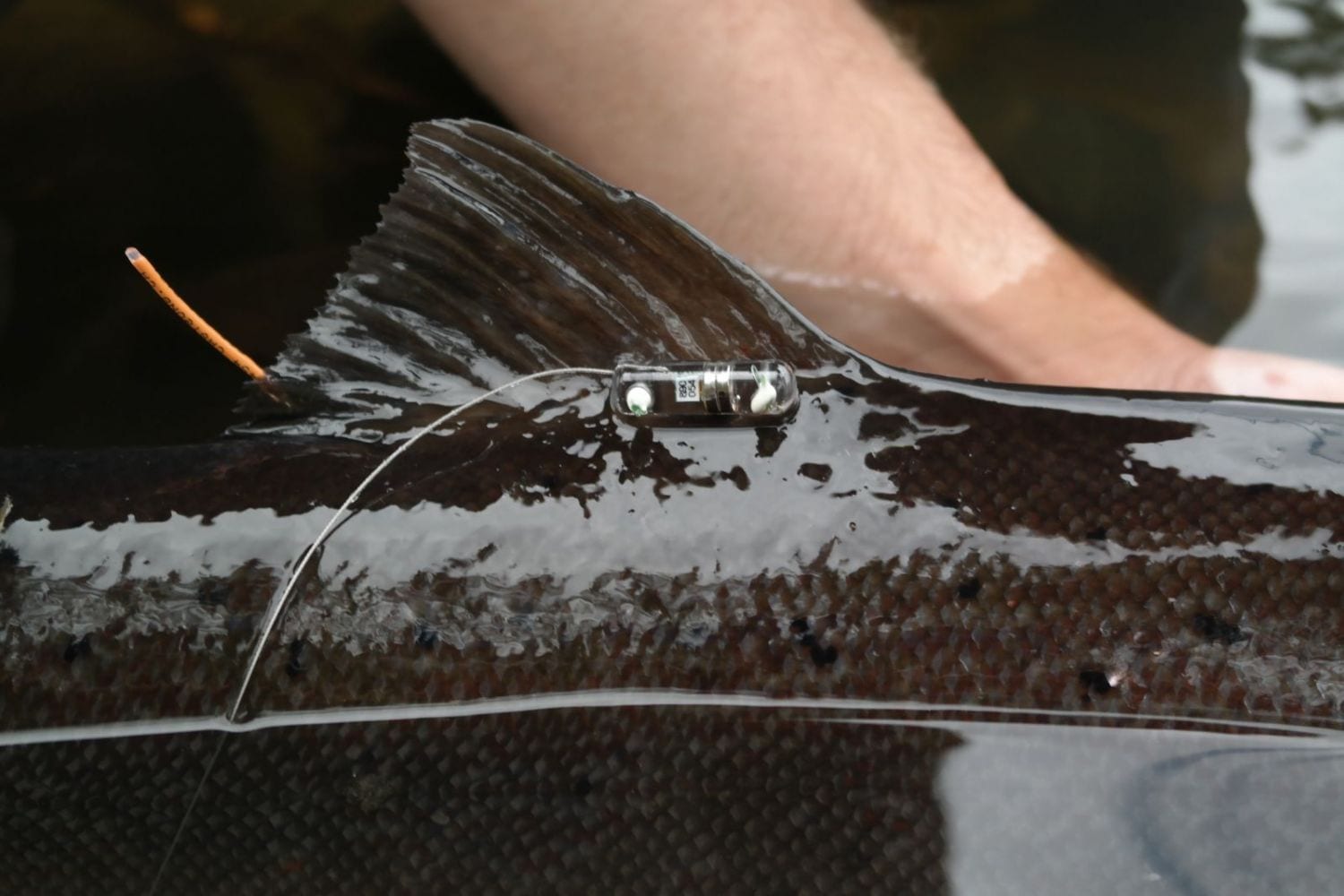
Adult salmon with a encoded, orange Floy tag implanted in back of the dorsal fin, and a radio tag with antenna installed on the near side.
All released fish were equipped with radio, PIT, and visual floy tags. (radio and Floy tag picture) These tags each serve a slightly different purpose and provide redundancy in case of a failure of one or both of the electronic tags. Radio tags broadcast a signal that can be detected from hundreds of meters away, and they will function until the battery runs out. The PIT tags have no battery – their response is powered by the signal coming from the receiving device – and thus they last indefinitely. PIT tags, though, have a very short detection distance, and since they do not broadcast a signal it is much more difficult to locate fish with these tags. The Floy tags are just for external identification. Additionally, size measurements, scale and fin clip samples were taken. Through DNA analysis, fin clip samples will allow the assessment of that individual’s parental origin, if the fish is found in following years. Size measurements of adult fish are used to calculate the number of eggs that might be deposited in the experimental stretch. While the age of the SAS fish being released is known exactly, the scale samples from the wild fish allows their age to be calculated also.
When the adult fish were released the females were ripe, and perhaps some were over-ripe. This was due to the late approval of the project. Fish started spawning the first night they were released, so they didn’t migrate far nor have adequate time to adapt to the different temperature of the stream and recover from the shock of transfer. However, some successful spawning did take place in the ER in 2017.
The adult fish in the ER were monitored throughout the entire spawning season via active radio tracking. The behavior of the SAS fish was documented and spawning redds were marked with GPS points. The barrier fence was removed at the end of the spawning season to allow the outmigration of fish from the experimental part of the river. Stationary radio antennas were used to observe post spawning outmigration from the ER into the tidal zone of the Miramichi River.
During the summer of 2018, an electrofishing survey was conducted in the experimental river stretch to examine the reproduction success of the released SAS fish. A total of 111 fry (0+) were sampled for parental DNA analyses. The results of the analyses will provide exact information on the individuals status; groups (wild female cross wild male; wild female cross SAS male; SAS female cross SAS male; SAS female cross wild male). Additionally, 101 of the caught individuals were equipped with a PIT tag. The tagged juveniles will be monitored for 3 years.
2018 In the autumn 2018, a total of 40 SAS and 40 wild fish were released into the experimental river weeks before spawning commenced. All fish were sampled for scales and fin clips, and received the same tags as in 2017. The fish were again monitored throughout the entire spawning season. Stationary radio antennas are used to monitor the final outmigration into the estuary, as well as the survival success until spring 2019. (picture here of Kayak on ice) The radio antennas are not 100% reliable, and not all the fish have been accounted for yet. But it is known that numbers of both the wild and SAS fish did survive spawning, and that both groups of fish behaved similarly after breeding was over. No adult fish stayed in the ER to spend the winter.
31 spawning redds were found after the spawning season of 2018. (pictures of redd) The total number is potentially much higher. Towards the end of the spawning period, high waters and accompanied turbidity did not allow the mapping of additional redds. I ran into this same problem myself on the Cains River this fall when the water was too high to either observe spawning or redds. During the field season, though, SAS and wild fish were observed performing various interactions, including spawning. This underwater video taken by CAST technicians documented a male SAS salmon spawning with a wild hen.
The reproduction success of the released individuals will be examined in the spring of 2019 via electrofishing surveys. DNA samples will determine the total number of progenies of the different cross groups (wild female cross wild male; wild female cross SAS male; SAS female cross SAS male; SAS female cross wild male). Once again, these parr will be equipped with PIT tags. The development, habitat use, and survival rate of the fry spawned next spring will then be observed for two years – when they leave and go to sea as smolts – together with the parr from the adult release in 2017. Expectations from evidence so far are that fry resulting from wild spawning of SAS adults, and cross groups of SAS and wild adults, will all be equally viable and have the same odds of living to become smolts, migrating to the sea, and eventually being among those that survive the ocean migration and return to the river as adults.
The video below was filmed in the ER on October 19, 2018 and shows a SAS male salmon spawning with a wild female salmon. The video is only one minute long, have patience that best part is the last 20 seconds.
Follow CAST and SAS – this link https://twitter.com/unbsalmon has photos and videos, and is consistently updated with additional information on the CAST program’s salmon research and efforts to bolster the Miramichi salmon population.
The post The CAST SAS Program and the Experimental River appeared first on Brad Burns Fishing.
Source: Brad Burns Fishing
Giv’er Miramichi is about “What’s up, what’s new, what’s happening”. We are focused on building people up, supporting one another and celebrating our successes.

